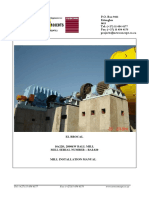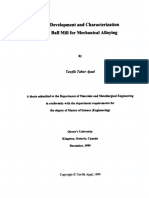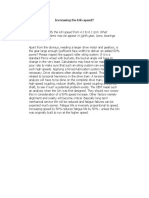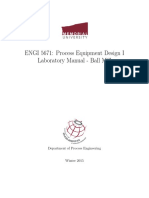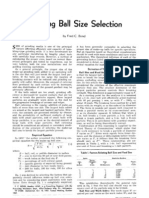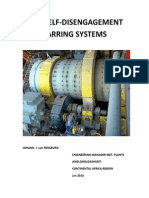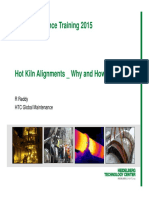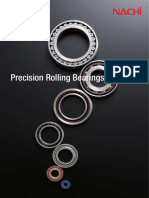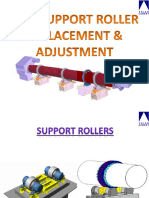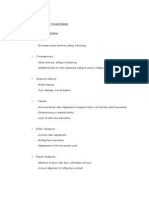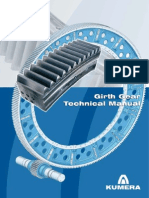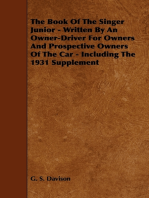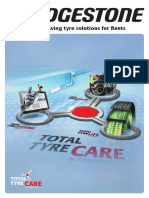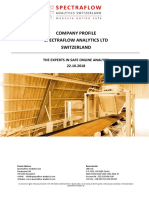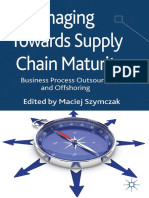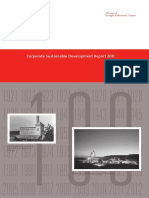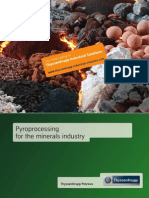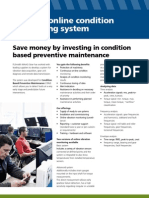0 ratings0% found this document useful (0 votes)
174 viewsHow To Spec A Mill Gear
How To Spec A Mill Gear
Uploaded by
awfahaddadinuseful info for mill gear
Copyright:
© All Rights Reserved
Available Formats
Download as PDF, TXT or read online from Scribd
How To Spec A Mill Gear
How To Spec A Mill Gear
Uploaded by
awfahaddadin0 ratings0% found this document useful (0 votes)
174 views8 pagesuseful info for mill gear
Original Title
How to Spec a Mill Gear
Copyright
© © All Rights Reserved
Available Formats
PDF, TXT or read online from Scribd
Share this document
Did you find this document useful?
Is this content inappropriate?
useful info for mill gear
Copyright:
© All Rights Reserved
Available Formats
Download as PDF, TXT or read online from Scribd
Download as pdf or txt
0 ratings0% found this document useful (0 votes)
174 views8 pagesHow To Spec A Mill Gear
How To Spec A Mill Gear
Uploaded by
awfahaddadinuseful info for mill gear
Copyright:
© All Rights Reserved
Available Formats
Download as PDF, TXT or read online from Scribd
Download as pdf or txt
You are on page 1of 8
Introduction
An expert in whole-brain learning, Ste-
ven Snyder, once said, Tere are only
two problems in life: (1) You know what
you want, and you dont know how to
get it; and/or (2) You dont know what
you want.
To solve these two problems, a clear
understanding and good communi-
cation skills are necessary. In terms
of getting a great gear set, it requires
a coordinated efort between the end
user, the gear manufacturer, the gear
designer, the consultant, and the origi-
nal equipment manufacturer. Each
of these groups has a key piece of the
puzzle necessary for the gear to fulfll
its useful operational life. Tis paper
will outline what information needs to
be collected and passed on to the gear
designer to develop a successful drive
train for a specifc area of use: gearing
for cylindrical grinding mills. It will act
as a checklist for information required,
outline the impact of certain selections,
and resolve ambiguities to address the
two problems outlined above.
Background
A grinding mill circuit is an unusual in-
stallation for gearing when compared
to traditional enclosed gear drive in-
stallations, but these applications have
been utilized for over eighty six years.
Te grinding process, more accurately
termed a tumbling process, uses hori-
zontal rotating cylinders that contain
the material to be broken, potentially
augmented by grinding media (Fig. 1).
Te material moves up the wall of the
drum until gravity overcomes centrifu-
gal forces, and it drops to the bottom of
the drum to collide with the remaining
material. Tis breaks up the particles
and reduces their size. Power required
for this process ranges from 75 to
18,000 kW (100 to 24,000 HP), in either
single- or dual-motor confgurations.
In this type of application, the pinion
is mounted on pillow blocks driven by
a low-speed motor or a motor and en-
closed gear drive. Te gear is mounted
on the mill using a fange bolted con-
nection (see Figure 2 for one type of
fange installation). Both the center
distance and alignment are adjustable
either by shimming the pillow blocks or
moving the mill. Lubricant is typically
either high-viscosity oil (1,260 cSt @
100C) sprayed on the gear in 15 min-
ute intervals or a lower viscosity oil or
grease product sprayed on the pinion
every few minutes. Alternately, lubrica-
tion can be applied by continuous spray
or dip immersion methods.)
Gear sizes can range up to 14 meters
(46 feet) in diameter with face widths
approaching 1.2 meters (50 inches).
Typical tooth sizes range from 20 to 40
module (1.25 DP to 0.64 DP). Single-
stage reduction gears range from 8:1
to as much as 20:1. Gear materials are
typically through hardened cast steel,
fabricated forged and rolled steel, or
spheroidal graphitic iron. Pinions are
carburized, induction hardened, or
through hardened heat treated steels.
Printed with kind permission of the copyright holder, the American Gear Manufacturers Association, 1001 N. Fairfax Street, Fifth Floor,
Alexandria, VA 22314-1587. Statements presented in this paper are those of the author(s) and may not represent the position or opinion
of the American Gear Manufacturers Association.
How to Spec a Mill Gear
Frank C. Uherek
This paper outlines the design considerations that go into construction of a drive system in order to
explain the importance of specific data, why it is required, and where design freedom is necessary. Apart
from loads and speeds, interface dimensions and site specific conditions are also needed. Deciding up
front which gear rating practice to select can affect the torque capacity of the drive train by ~15%.
Figure 1 Grinding mill process.
34 Power Transmission Engineering ]
WWW.POWERTRANSMISSION.COM
FEBRUARY 2014
TECHNICAL
For small installations, either a one- or
two-piece design is used with the split
joints located in the root of a tooth.
Four- and six-piece designs are also uti-
lized when the weight of the segments
exceeds the crane capacity of the facili-
ty or pouring capacity for cast segments
becomes an issue.
Initial Data
Te purpose of a grinding mill is to
make large rocks into small rocks. To
accomplish this task involves signif-
cant calculations on the part of the mill
builder. Tese include reviewing the size
of the incoming and outgoing product,
the rate of production, the size of the
mill in diameter and length, the grind-
ing media, the theoretical critical speed
of rotation, and the interior confgura-
tion of the mill. Unfortunately, to get
what is required, this information needs
translation into something that the gear
designer can input into the rating calcu-
lations. Te calculation of actual contact
stress s
c
does not have an input for tons/
hour of mineral produced.
A theoretical relation of mill diameter
to power is ~ mill diameter
2.5
. To get
torque, we also need the speed of the
drum. Tis is based on the concept of
a theoretical critical speed of rotation
(CS). Te critical speed of rotation is
the speed (in rpm) at which an infnite-
ly small particle will cling to the inside
of the liners of the mill for a complete
revolution.
(1)
CS =
43.305
Mill Diameter
where
CS is the theoretical critical speed of
rotation, and is the mill speed,
rpm;
Mill diameter is the nominal inside
diameter of the mill, m.
Since we actually need the particles
to come of the inside diameter of the
mill to be processed, the typical mill
speed is ~75% of the theoretical criti-
cal speed of that mill. Using the above
formulas, signifcant experience of how
the grinding process works, and mate-
rial properties of the ore being ground,
the mill builder can provide the gear
designer with input power and output
speed.
Te next step is the interface dimen-
sions. Since the gear needs to turn the
mill, it needs to have a bore larger than
the mill outside diameter. Te mill out-
side diameter is a function of the grind-
ing process selected. Autogenous mills
are the largest in diameter since the
feed grinds itself. A semi-autogenous
mill uses some metallic or ceramic balls
to assist the grinding process and can
be slightly smaller. Ball mills are smaller
still and use a larger percentage of balls
to perform most of the work. Large-di-
ameter mills allow for use of gear ratios
not normally thought possible in sin-
gle-reduction applications namely,
8:1 to 20:1.
If the gear is to replace an existing
gear, then manufacturing drawings or
installation drawings complete with
gear attributes, center distance and
dimensions are required. Although
budgetary pricing can be made with-
out dimensional data, once an order
is present, full data is required. Tese
gears are made custom for each instal-
lation so there are no catalogs available
to provide this information.
Site-specifc considerations also need
to be disclosed. If the gear is expected to
operate outdoors or in unheated struc-
tures, a minimum and maximum tem-
perature range should be given to assist
in lubricant selection and method of
application. Transportation limitations
can also afect the design. If crane ca-
pacity or size limitations exist, the gear
designer can increase the number of
segments of the gear to allow for re-
duced handling weights.
Rating Standards
Once mill diameter has been estab-
lished, the largest cost driver is the ac-
tual size of the gear. Gear power capac-
ity is a function of how the ratings are
calculated. Tere are two basic rating
practices in use in gearing: ISO 6336
(Ref. 8) and ANSI/AGMA 2001-D04
(Ref. 5). Both exist to provide a com-
mon basis for comparing the power
capacities of various designs. By their
nature, these are general standards in
that they apply for fne pitch gears of
4 mm in diameter as well as 13,000 mm
gears, made from various materials and
accuracy grades. Given that range, we
run the risk of missing signifcant size
efects either large or small or cli-
ent expectations that will afect the
performance of a gear set. Tis is why
the general standards suggest use of an
application-based standard when de-
signing gears for a specifc purpose.
Te rating committee uses the funda-
mental standard as a criteria and meth-
od source for rating gears and adjusts
the component factors to match experi-
ence and feld performance for existing
designs. AGMA and, to a lesser extent,
ISO, have developed application stan-
dards for a variety of applications such
as enclosed drives, high-speed units,
drives for wind turbines, marine, auto-
motive, and steel mill rolling applica-
tions to narrow the scope of the general
Figure 2 Grinding mill installation.
35
Power Transmission Engineering FEBRUARY 2014
rating practice and fne tune it for the
nature of service.
For grinding mill service, an early ap-
plication standard was AGMA 321.05
(Ref. 3); it was frst approved for use
in October 1943. Various iterations oc-
curred with the last major re-write in
1968, when the standard was updated
to use the formulations of AGMA 211.02
(Ref. 9) and AGMA 221.02 (Ref. 10). Te
last editorial corrections were issued in
March 1970.
Tis rating practice uses concepts
that predate our current AGMA 2001
thinking. Te rating formulas for gear-
ing in this standard are:
(2)
Pac =
np d
2
Cv F
I
(
sac
)
2
C
2
H
12600 Cm Cp
(3)
Pat =
np d Kv F
sat
J
12600 Cm Pd
where
P
ac
is allowable transmitted power for
pitting, HP;
n
p
is pinion speed, rpm;
d is operating pitch diameter, in;
C
v
is dynamic factor pitting;
F is face width, in;
C
m
is load distribution factor;
I is I factor;
s
ac
is allowable contact stress number,
lbs/in
2
;
C
p
is elastic coefcient, (lbs/in
2
)
0.5
;
C
H
is hardness ratio factor;
P
at
is allowable transmitted power for
bending, HP;
K
v
is dynamic factor bending;
s
at
is allowable bending stress number,
lbs/in
2
;
J is J factor;
P
d
is transverse diametral pitch, in
-1
.
Te major infuence factors were as-
signed specifc values based on the size
and experience of the industry with this
type of gearing. Two dynamic factors
were used, but both were a function of
the pitch line velocity of the set. Load
distribution factor was a function of
face width only, covering the range of
50 to 1,016 mm (2 inches to 40 inches)
with modifcation factors to adjust its
value when teeth were hardened af-
ter completion. Te allowable contact
stress was reduced by the standard;
however no metallurgical properties
other than hardness were discussed.
Te hardness ratio factor was expand-
ed to cover a ratio range of 1:1 to 20:1.
Te allowable bending stress was also
reduced by the standard but it also re-
mained only a function of hardness.
Service factors ranged from 1.5 to 1.65
for grinding mill service.
ANSI/AGMA 6004-F88 (Ref. 11) was
the frst attempt to refect ratings based
on tooth attribute quality for mill and
kiln gearing; it was released in 1988. Af-
ter its limited acceptance in the indus-
try, the AGMA Mill Gearing Committee
developed the current standard ANSI/
AGMA 6014-A06 (Ref. 4), released in
2006. It is currently in its fve-year re-
view cycle with the committee.
Te rating formulas used in AGMA
6014 are as follows:
(4)
Pacm =
np F I
(
d sac Zn Ch
)
2
396000
Kvm
Km Cp
(5)
Pacm =
np d
F
J sat Yn
396000 Pd Km KBm
where
P
acm
is allowable transmitted power
for pitting, HP;
K
vm
is dynamic factor bending;
Z
n
is stress cycle factor for pitting;
P
atm
is allowable transmitted power
for bending, HP;
Y
n
is stress cycle factor for bending;
K
Bm
is rim thickness factor.
Tis formula now includes the efect
of stress cycle factors as well as making
adjustments to the base evaluations of
dynamic and rim thickness factor.
Te critical changes that the com-
mittee made to the standard addressed
the fact that these gears mesh through
the use of independent bearing sup-
port. Te gearing is not mounted in a
Table 1 Gear geometry and application data
Attribute Pinion Set Gear
Number of teeth 21 314
Ratio 14.95:1
Normal diametral pitch, in
-1
1.0154
Normal module, mm 25.01
Face width, in 27.25
Face width, mm 692
Axial overlap 1.100
Outside diameter, in 23.043 313.670
Outside diameter, mm 585.3 8043.4
Tooth accuracy Q12/A5 Q10/A7
Bore diameter, in 247.000
Bore diameter, mm 6273.8
Material hardness 55 HRC 335 HBW
Application
Power, HP 5000
Power, kW 3729
Speed, rpm 202.42 13.538
Durability service factor 1.75
Strength service factor 2.50
Figure 3 Normalized rating factors for base set.
36 Power Transmission Engineering ]
WWW.POWERTRANSMISSION.COM
FEBRUARY 2014
TECHNICAL
housing where all bearing supports are
aligned by machining. Based on the ra-
tios, modules (pitches), and face widths
(approaching 1.2 meters, 50 inches),
the efect of size and material us-
age, cast or forged steel or ductile iron
needed to be included in the standard.
Achievable and measurable accuracy
grades limit the values of the dynamic
factor. Client expectations of long life
indicate values of the stress cycle factor
Z
N
and Y
N
be based on 25 years. Dura-
bility service factors were also increased
from AGMA 321.05 to C
SF
= 1.75 for high-
power mills over 3,350 kW (4,500 HP) in
size. Strength service factors K
SF
were
also specifed.
Given two standards designed to
rate gears for this service, others occa-
sionally use general standards or their
own in-house-developed calculations.
When this path is chosen, there can be
signifcant risk that may not be realized
by the user of the rating practice. As
noted above, an application standard
takes into account the narrower range
of gear size, operating experience, typi-
cal materials, and mounting conditions
of the process. A general standard,
needing to be all things to all people
can set requirements or allow mount-
ing practices that are easily achievable
when working with 100 kg (220 lb) size
gear sets, but are problematic with
118,000 kg (130 ton) designs.
To illustrate this, an existing gear
set was selected and rated per various
standards (Table 1). Using the data in
Table 1, this set was rated to the various
AGMA rating practices to illustrate dif-
ferences in specifc rating factors. Each
rating factor was normalized to its cor-
responding AGMA 6014 component
(results shown in Figure 3).
Te hardness factor C
H
is more con-
servative in AGMA 321.05 and AGMA
2001. Te dynamic factor C
V
K
V
for
AGMA 321.05 is not a function of ac-
curacy, so it has a greater de-rating ef-
fect than the Q10/A7 values computed
with the other standards. Also note that
AGMA 2001 is more aggressive than
AGMA 6014 for this factor. Tis was the
intent of the mill gearing committee
based on their experience with ANSI/
AGMA 6004-F88 that adopted dynamic
factor from the base standard without
modifcation.
Load distribution C
M
K
M
follows the
same trend as dynamic factor for the
same reasons. Te change in I factor
was caused by the release of the infor-
mation sheet for its calculation. Stress
cycle factors Z
N
Y
N
were unknown in
AGMA 321.05, and AGMA 6014 uses
more conservative values than AGMA
2001 to control the power capacity of
the set. Te expansion of metallurgi-
cal specifcations in AGMA 2001 and
AGMA 6014 over the AGMA 321.05 re-
quirements of hardness and steel af-
fected the allowable stress numbers s
ac
and s
at
. Te use of 55 HRC pinions also
lowers s
ac
and s
at
in AGMA 6014 over the
58 HRC values in AGMA 2001. Refer-
ence 1 further outlines the diferences
and history of gear rating practice for
mill and kiln drives in AGMA.
Given the interaction of the above
factors, Figure 4 illustrates the resultant
rating. Te durability service factors
based on transmitted power are 1.71,
1.76, and 1.75 for 321, 2001, and 6014,
respectively. Te strength service fac-
tors are 2.14, 2.84, and 2.53, respective-
ly. We note the lack of strength rating
Figure 4 Rating comparison for the base set.
Figure 5 Face width as function of standard selection.
37
Power Transmission Engineering FEBRUARY 2014
in the AGMA 321.05 rating and the ex-
cess strength rating in the 2001 ratings
highlighting the problem of rating a set
optimized to a diferent rating practice.
Te actual power able to be transmit-
ted is 3,204 kW, 3,758 kW, and 3,734 kW
(4,297 HP, 5,040 HP, and 5,010 HP). Te
~16.6% diference in power capacity
between the AGMA 321.05 and AGMA
6014 ratings meets the goal of the Mill
Gearing Committee to achieve a rating
diference of 15% between the two stan-
dards.
To look at the efect of changing the
base standard, Figure 5 compares the
6014 base design to sets designed to
other standards utilizing face width
adjustment. Te axial overlap and heat
treatment was kept constant as the face
width was increased or decreased to
meet the service factor requirement of
1.75/2.50.
Te more conservative AGMA 321.05
increased the face width by six inches.
Use of a general rating practice (AGMA
2001 and ISO 6336) with similar at-
tributes to AGMA 6014 reduced face
width by two and 6.75 inches, respec-
tively. Aggressive use of the rating prac-
tice, termed AGMA 2001 Best, enabled
a 54% face width reduction. However,
with extra precision mounting require-
ments, high tooth accuracy require-
ments, and reduced stress cycle perfor-
mance, it is unlikely that the predicted,
optimistic performance of this gear set
in this demanding application would
meet client expectations.
All gear rating standards stress the
need for an experienced gear designer
capable of selecting reasonable val-
ues for rating factors and who is aware
of the performance of similar designs
through test results or operating expe-
rience. When this is removed from the
equation, through the use of an inap-
propriate rating standard or in combi-
nation with OEM or end user in-house
practice, a valuable reality check is lost.
In most cases, when the gear designer
faces such a request, they also check
the proposed design under AGMA 6014
or AGMA 321.05 to make sure it satis-
fes the standard requirements. In cases
when the design sufciently deviates,
concerns of suitability or ftness of pur-
pose need to be raised with the client.
Prime Mover Selection
Having resolved the output speed and
input power, the next decision point is
to determine the input speed to the sys-
tem. Low speed synchronous motors in
the range of 250150 rpm are one op-
tion. Tis eliminates a source of power
loss by removing the gear drive and
coupling from the drive train. However
there is a cost premium to multi pole
(20 40) motors over the more conven-
tional kind. Another option is to insert
a gear drive between the motor and the
mill pinion. If one is trying to minimize
motor cost, the tendency is to maximize
motor speed (1,500 1,200 rpm).
Figure 6 illustrates that as input speed
increases, the amount of allowable
power in a gear drive decreases. Tis is
mainly due to cage velocity of the gear
drives input shaft bearings. Many bear-
ing manufacturers publish speed limits
in their catalogs as a function of ther-
mal loading, above which some meth-
od of supplying cool oil to the bearing
is required, as well as a limiting speed.
Figure 6 Motor power as function of input speed for standard bearing selections.
Figure 7 Dynamic load rating as a function of limiting speed.
38 Power Transmission Engineering ]
WWW.POWERTRANSMISSION.COM
FEBRUARY 2014
TECHNICAL
Limiting speed is a function of the form,
stability, or strength of the bearing cage,
lubrication, forces, precision, and other
efects. Exceeding the limiting speed of
a standard bearing forces the designer
into high-precision, limited-produc-
tion-run bearings that may not be read-
ily available or feasible.
Figure 7 illustrates the drop-of in
load carrying capacity as a function
of limiting speed for a 340 mm spheri-
cal roller bearing series. Tis illustrates
the problem of increasing shaft speeds,
thus limiting bearing selection to cause
the rating element in the gear drive to
be the high-speed bearing in place of
the more typical and more expensive
low-speed gear.
Gear Drive Considerations
Te next selection point given use
of a high-speed motor is how to dis-
tribute the ratio between the gear drive
and the mill set. An initial conjecture is
to wrap the gear as closely as possible
around the mill or kiln and place the
remaining ratio in the gear drive, based
on the assumption that a carburized,
hardened and ground enclosed drive
is more cost-efcient in torque trans-
mittal capabilities than the open set.
Tis needs to be balanced by the loss
in efciency if a multiple-stage reduc-
tion drive is necessary for the ratio re-
quired. Typical single-reduction drives
achieved efciencies of 98.5 99%,
whereas double-reduction drives are
in the 97 98% range. If one is using a
line of catalog gear drives, the steps in
torque transmittal capacity as a func-
tion of unit size will also drive the selec-
tion. Forcing a mill pinion speed in a
reducer drive train or selecting too fast
of a motor speed can lead to low-cost
items such as input shaft bearings in
the gear drive constraining the entire
design of the drive train. An example of
this is the combination of high power
(over 5,000 kW 6,700 HP) high-speed
motors with L10 bearing requirements
greater than the design amount based
on the service factor of the drive. Re-
questing 100,000 hours of L10 life with
a 2.0 service factor that implies 50,000
hours of life in a catalog-designed drive
requires the drive designer to increase
the size of the input shaft bearings to
Table 2 Typical load history for mills
Base load,
hp
Speed
Start
factor
Actual
load, hp
Time per year,
seconds
Number of
starts per
year
Time per
year, hrs
Years
Time for 25 years
of operation, hrs
Starting load 10806 180 1.5 16209 7 12 0.02 25 0.583
Inching load 123 1.4631 1 123 1800 12 6.00 25 150.000
Running load 10806 180 1 10806 31514316 1 8753.98 25 218849.417
8760 219000
Table 5 Expected life of mill given a typical duty cycle for 1.25 overload factor
Overload factor Ko = 1.25 for running loads
Duty Ratio wear pinion Ratio wear gear Ratio strength pinion Ratio strength gear
Starting 5.23024E-09 6.6996E-06 1.06083E-14 1.18697E-14
Inching 2.06011E-10 4.25751E-07 4.1522E-18 2.2215E-18
Running 0.000122969 0.017670034 1.40828E-11 6.78081E-12
Sums 0.000122974 0.017677159 1.40934E-11 6.79268E-12
Pinion wear Gear wear Pinion strength Gear strength
Life Hours 1780862895.23 12388868.30 15539229428435500.00 32240579740876500.00
Life Years 203294.85 1414.25 1773884637949.25 3680431477269.00
Table 3 Expected life of mill given a typical duty cycle for 1.0 overload factor
Overload factor Ko = 1.0 all cases
Duty Ratio wear pinion Ratio wear gear Ratio strength pinion Ratio strength gear
Starting 5.23024E-09 6.6996E-06 1.06083E-14 1.18697E-14
Inching 2.06011E-10 4.25751E-07 4.1522E-18 2.2215E-18
Running 7.29597E-06 0.001922728 1.40726E-14 6.7759E-15
Sums 7.30141E-06 0.001929854 2.4685E-14 1.86478E-14
Pinion wear Gear wear Pinion strength Gear strength
Life hours 29994206923.06 113480102.36 8871779508117490000.00 11744009610536000000.00
Life years 3423996.22 12954.35 1012760217821630.00 1340640366499550.00
Table 4 Expected life of mill given a typical duty cycle for 1.13 overload factor
Overload factor Ko = 1.13 for running loads
Duty Ratio wear pinion Ratio wear gear Ratio strength pinion Ratio strength gear
Starting 5.23024E-09 6.6996E-06 1.06083E-14 1.18697E-14
Inching 2.06011E-10 4.25751E-07 4.1522E-18 2.2215E-18
Running 3.42739E-05 0.006479422 6.18972E-13 2.98033E-13
Sums 3.42793E-05 0.006486547 6.29584E-13 3.09905E-13
Pinion wear Gear wear Pinion strength Gear strength
Life Hours 6388689342.00 33762184.86 347848597742773000.00 706667465221281000.00
Life Years 729302.44 3854.13 39708744034563.20 80669801965899.70
39
Power Transmission Engineering FEBRUARY 2014
achieve such a life requirement. Tis
may lead to going to the next unit size
to achieve the L10 life requested. Not
allowing the ratio in the drive to in-
crease to use more of the excess torque
capacity of the gear drive by slowing
down the pinion speed causes an un-
even distribution of torque generation
between the drive and the gear set, thus
increasing costs. It is best to advise the
gear supplier of either the direct-driven
or reducer-driven option and let them
work out the most cost-efcient solu-
tion to size the gear/gear drive combi-
nation.
Duty cycle. A key parameter in gear
train selection is the frequency of use.
Since these sets are designed for 25
years of life, one needs to review the
load cases to ensure that all modes of
operation are addressed. ills experience
starting loads; bringing the mill from
rest to full operation; inching loads;
where the mill is slowly turned at ~ 0.1
rpm for inspection or maintenance
purposes; and the normal running load
during operation. A typical load history
is shown in Table 2.
Given this load spectrum, a Miners
rule analysis can be performed to de-
termine expected life. Although the
starting loads at 1.5 times and the inch-
ing loads are 1.4 times base motor pow-
er, they have a minuscule impact on life
of the mill. Tables 35 list the expected
lives of a mill set for selected values of
overload factor K
O
.
Service factor is made up of overload
capacity, life expectation, reliability of
stress number data, and economic risk
of failure. For this type of service, the
major component of service factor is
economic risk of failure.
Design Considerations
Te last items to consider are the ar-
rangement and structure of the gear
train. Gear material choices are a large
cost driver to the overall design. Tese
gears are typically made from cast steel,
fabricated-forged and rolled steel rim
with welded steel web, or ductile iron.
Each material has its sweet spot in
terms of cost-per-inch/pound of torque.
Figure 8 illustrates torque capacity as a
function of price index, with the most
expensive design normalized to a value
of 100. Reference 2 further outlines the
cost considerations for large gears. As
with items outlined above, since one
is purchasing torque, it is usually best
to allow the gear supplier to determine
the optimal material for gear construc-
tion.
Ambient conditions play a role, usu-
ally in the form of thermal consider-
ations. Gear drives of this size are usu-
ally cooled by heat exchangers that
need either a source of water or air at a
reasonable temperature.
Lubrication systems are used to keep
a constant fow of oil to the bearings
and gear meshes. Tey need to function
across the wide temperature range to
ensure that the drive is not starved for
lubricant at cold temperatures. In many
cases successful oil pumping becomes
an issue below 14C (57F) for VG320
mineral oils and 9C (48F) for syn-
thetic. Immersion heaters, and/or by-
pass fltration lines may be necessary to
ensure an adequate supply of oil. Tese
considerations are avoided in the di-
rect-connect, low-speed motor design.
Te mill set typically requires much
higher oil viscosities than a gear drive
requiring either the use of diluents or
heat-traced pipes to ensure fow of lu-
bricant to the mesh. Another consid-
eration is the altitude of the mine site
where heat transfer to air may be re-
duced. Terefore minimum and maxi-
mum expected temperatures, altitude,
and the availability of cooling methods
need to be specifed.
Support equipment can also infu-
ence drive train size. Pillow blocks are
typically used to support the mill pin-
ion. Tis gives the fexibility to adjust
center distance and pinion orientation
to optimize load contact.
Te economic cost of downtime typi-
cally leads to large-diameter pinion
extensions to reduce torsional stress.
Tis combined with a helix angle
range of 5 to 11 degrees usually re-
sults in shaft diameter in place of L10
life requirements determining the size
of pillow blocks required. Coupling se-
lection will infuence the length of the
shaft extension on the drive and driven
equipment, as well as the torsional re-
silience of the drive train.
Figure 8 Cost comparison of blank construction as a function of torque.
40 Power Transmission Engineering ]
WWW.POWERTRANSMISSION.COM
FEBRUARY 2014
TECHNICAL
Required Data
Given all the above, the following data
is necessary to successfully specify a
mill drive set:
Motor power
Number of motors
Mill speed
Motor speed
Design standard (for gear set and
gear drive if required)
Service factors based on above
standard
Gear interface dimensions (e.g.,
bore, minimum center distances,
and drive train arrangement, weight
limitations if any)
Inching requirements (% of full load
torque, mill speed in inching, desired
connection point mill pinion or
gear drive/electric motor shaft)
Duty cycle (if not continuous)
Ambient temperature range (low and
high)
Altitude
Specifcation requirements (e.g.,
nondestructive testing such as
ultrasonic or magnetic particle,
material properties)
Inspection and witness requirements
(on site visits to manufacturing
location)
Documentation requirements
New or existing installation (if
existing, need tooth geometry)
Conclusions
To resolve the two previously cited
problems in life, one needs to clearly
understand what one wants to do and
communicate that to the people who
can accomplish the task. Writing a gear
train specifcation requires attention to
detail and a realization of the impact
that those choices can make. Tis paper
reviewed the drive train outlining the
information necessary for the gear de-
signer to successfully develop a gear for
this application. It noted various items
that can play a dramatic role in the size
and cost of a selection and indicated
where creative freedom is necessary for
an optimized drive that considers ca-
pacity, cost and lead time.
Acknowledgements. Te author would
like to thank his colleagues at Rexnord
and peer reviewers for providing editing
eforts and critical commentary for this
paper.
References
1. Uherek, F.C. 06FTM05: Development of
a Gear Rating Standard A Case Study
of AGMA 6014-A06, American Gear
Manufacturers Association, AGMA 2006
FTM.
2. Uherek, F.C. Gear Material Selection and
Construction for Large Gears, 12FTM13,
American Gear Manufacturers Association,
2012 FTM.
3. AGMA Standard 321.05. Design Practice
for Helical and Herringbone Gears for
Cylindrical Grinding Mills, Kilns and Dryers,
American Gear Manufacturers Association,
1970.
4. ANSI/AGMA Standard 6014-A06. Gear Power
Rating for Cylindrical Shell and Trunnion
Supported Equipment, American Gear
Manufacturers Association, 2006.
5. ANSI/AGMA Standard 2001-D04.
Fundamental Rating Factors and Calculation
Methods for Involute Spur and Helical
Gear Teeth, American Gear Manufacturers
Association, 2004.
6. Metso Minerals Basic Grinding Mill Training
Course. February, 2011.
7. SKF General Catalog. SKF 2005.
8. ISO Standard 6336:2006. Calculation of Load
Capacity of Spur and Helical Gears.
9. AGMA Standard 211.02. Surface Durability
(Pitting) of Helical and Herringbone Gear
Teeth.
10. AGMA Standard 221.02. Rating the Strength
of Helical and Herringbone Gear Teeth.
11. ANSI/AGMA Standard 6004-F88. Gear Power
Rating for Cylindrical Grinding Mills, Kilns,
Coolers and Dryers.
Frank Uherek, principal
engineer with Rexnord in
Milwaukee WI, received
a BSME from the Illinois
Institute of Technology in
1981 and a MBA from the
same institution in 1985.
He has been involved in the
gear engineering eld for over 33 years, holding
various positions in design engineering and
quality management covering enclosed drives,
wind turbine drives, and open gearing for mill
and kiln applications. AGMA activities include
chairman of the Helical Gear Rating Committee;
membership of numerous technical committees;
and editor of AGMA 2001, AGMA 2121, AGMA
6014, and AGMA 6015. He received the AGMA
TDEC award in 1997 for his outstanding
contributions to the art of gear design and
utilization. He has previously presented three
papers at AGMA Fall Technical meetings and
co-wrote two papers for IEEE cement industry
conferences. In 2011 he was honored with the
AGMA Distinguished Service Award for his work
in developing AGMA gear rating standards.
gear drives
For Related Articles Search
at www.powertransmission.com
41
Power Transmission Engineering FEBRUARY 2014
You might also like
- Ball Mill Manual PDFDocument54 pagesBall Mill Manual PDFAndrews Osei100% (2)
- 16' X 22' Ball Mill Installation ManualDocument54 pages16' X 22' Ball Mill Installation Manualpataza011100% (3)
- Salesforce Smart Testing WhitePaper FinalDocument11 pagesSalesforce Smart Testing WhitePaper FinalIris ToledanoNo ratings yet
- Installation - Ring Gear Installation ManualDocument31 pagesInstallation - Ring Gear Installation ManualManuel Ortiz86% (7)
- 7lbs in 7 Days Shopping List PDFDocument2 pages7lbs in 7 Days Shopping List PDFawfahaddadinNo ratings yet
- DEC - 10 - RAJIV - PAPER Geearless Vs Geared Mill Drives PROCEMINDocument12 pagesDEC - 10 - RAJIV - PAPER Geearless Vs Geared Mill Drives PROCEMINPeluche de PapelNo ratings yet
- Girth Gear WearDocument6 pagesGirth Gear Wearho-fa100% (2)
- Trunnion Bearing ClearanceDocument1 pageTrunnion Bearing ClearanceJuanPabloGonzalezFiblas0% (1)
- HPGR Revolution in PlatinumDocument8 pagesHPGR Revolution in PlatinumtauficsNo ratings yet
- Sag MillingDocument21 pagesSag MillingNaren KumarNo ratings yet
- Ball Mill Hydrostatic Slide Shoe BearingDocument26 pagesBall Mill Hydrostatic Slide Shoe BearingJoel Miguel Angel Pacheco100% (1)
- Mq45271 Ball Mill CalculationDocument130 pagesMq45271 Ball Mill CalculationAntonio Carlos de Angelis100% (2)
- PHD Thesis Khairy ElsayedDocument317 pagesPHD Thesis Khairy ElsayedCarlos Antonio Ribeiro100% (1)
- BaumeDocument10 pagesBaumeSheyATNo ratings yet
- SAG Mill Liner DesignDocument37 pagesSAG Mill Liner DesignRodrigo García100% (1)
- GearboxDocument5 pagesGearboxakshaybj4396100% (1)
- Grinding Mills Ball Mill Rod Mill Design PartsDocument53 pagesGrinding Mills Ball Mill Rod Mill Design PartsRodrigo GarcíaNo ratings yet
- High-Pressure Grinding 2MB PDFDocument0 pagesHigh-Pressure Grinding 2MB PDFbulentbulutNo ratings yet
- Axial Positioning System of Rotary KilnDocument32 pagesAxial Positioning System of Rotary KilnRahmat Hidayat100% (1)
- 2 Girth Gear Asset ManagementDocument32 pages2 Girth Gear Asset ManagementAnesu ChimhowaNo ratings yet
- Gear Quality - What It's All AboutDocument5 pagesGear Quality - What It's All AboutFemi FadeyiNo ratings yet
- Ball Mill MaintainanceDocument3 pagesBall Mill MaintainanceKritish ShettyNo ratings yet
- AGMA Technical PaperDocument14 pagesAGMA Technical PaperLuis TestaNo ratings yet
- Kiln Alignment AnalysisDocument36 pagesKiln Alignment AnalysisIINo ratings yet
- Increasing The Kiln SpeedDocument1 pageIncreasing The Kiln SpeedsreeganeshrNo ratings yet
- HPGRDocument7 pagesHPGRMilad Honarvar100% (1)
- Mill Lines by FlSmidthDocument4 pagesMill Lines by FlSmidthIrving Dirzo CarrilloNo ratings yet
- Ball Mill ManualDocument7 pagesBall Mill ManualAnonymous EBReO8v100% (1)
- Control of Gearing Between Gear Ring and Pinion in Kiln - Through Leaden HeelsDocument3 pagesControl of Gearing Between Gear Ring and Pinion in Kiln - Through Leaden HeelsJavier GutierrezNo ratings yet
- How To Analyze Gear FailuresDocument6 pagesHow To Analyze Gear FailuresHossein100% (1)
- Grinding FundamentalsDocument49 pagesGrinding FundamentalsanruloNo ratings yet
- Rotary Kiln PDFDocument49 pagesRotary Kiln PDFVictor Maruli100% (2)
- Falk Installation Manuel, Ring Gear, Pages 17 24Document8 pagesFalk Installation Manuel, Ring Gear, Pages 17 24Yerko NavarroNo ratings yet
- Chutes Design PDFDocument11 pagesChutes Design PDFWaris La Joi Wakatobi100% (1)
- Fallas en CojinetesDocument2 pagesFallas en CojinetesAlfredo OrellanaNo ratings yet
- Grinding Ball Size SelectionDocument4 pagesGrinding Ball Size Selectionggoyet100% (1)
- Barring Inching DriveDocument29 pagesBarring Inching DrivepekanselandarNo ratings yet
- Girth Gear Failures - LinkedInDocument7 pagesGirth Gear Failures - LinkedInred patriotNo ratings yet
- Mill Operators Conference Proceedings USB BoddingtonDocument10 pagesMill Operators Conference Proceedings USB Boddingtonseansara1No ratings yet
- Kiln DriveDocument83 pagesKiln DriveMohammed B100% (1)
- Kiln Troubleshooting BasesDocument31 pagesKiln Troubleshooting Basesahmed mahmoudNo ratings yet
- Ball Milling - Final FinalDocument12 pagesBall Milling - Final FinalKrishna TejaNo ratings yet
- 3.0 Hot Kiln Alignments - Why and How Often PDFDocument16 pages3.0 Hot Kiln Alignments - Why and How Often PDFfrank kimaroNo ratings yet
- Gear Tooth ProfileDocument5 pagesGear Tooth ProfilepremnathgopinathanNo ratings yet
- Nachi Precision Rolling BearingsDocument78 pagesNachi Precision Rolling Bearingsjsalas85100% (1)
- TGM Planetary GearboxDocument8 pagesTGM Planetary GearboxOmar Ahmed ElkhalilNo ratings yet
- Kiln Support RollerDocument31 pagesKiln Support RollerMERADI100% (2)
- Gear Backlash: 6.1 Types of BacklashesDocument13 pagesGear Backlash: 6.1 Types of BacklashesRamazan MERALNo ratings yet
- FLS Ok Mill Common Platform WEB PDFDocument12 pagesFLS Ok Mill Common Platform WEB PDFVerananda AriyantoNo ratings yet
- Kiln Failure List Thrust Roller EDocument3 pagesKiln Failure List Thrust Roller Eardiansyahsave23No ratings yet
- Kumera Girth Gear Technical ManualDocument12 pagesKumera Girth Gear Technical ManualBhaskar Reddy100% (1)
- Bogiflex KGD20 - For PlantDocument13 pagesBogiflex KGD20 - For PlantAnonymous PVXBGg9TNo ratings yet
- Mechanical Seals Vs Gland Packing - Mechanical Engineering SiteDocument5 pagesMechanical Seals Vs Gland Packing - Mechanical Engineering SiteRajKumarNo ratings yet
- Graphite Blocks - Gear Lubricant - Rotary Kilns - PKSEDocument7 pagesGraphite Blocks - Gear Lubricant - Rotary Kilns - PKSEliofasNo ratings yet
- Crushing LawsDocument12 pagesCrushing Lawsharishkumar.ravichandranNo ratings yet
- Ball MillDocument8 pagesBall MillHumbulaniNo ratings yet
- Qdoc - Tips - Proceedings English CompleterevbDocument217 pagesQdoc - Tips - Proceedings English CompleterevbThanhluan Nguyen100% (1)
- Ball Mill EDMDocument47 pagesBall Mill EDMMKPashaPasha100% (1)
- Wear: Materials, Mechanisms and PracticeFrom EverandWear: Materials, Mechanisms and PracticeGwidon W. StachowiakNo ratings yet
- The Book of the Singer Junior - Written by an Owner-Driver for Owners and Prospective Owners of the Car - Including the 1931 SupplementFrom EverandThe Book of the Singer Junior - Written by an Owner-Driver for Owners and Prospective Owners of the Car - Including the 1931 SupplementNo ratings yet
- Why Industrial Bearings Fail: Analysis, Maintenance, and PreventionFrom EverandWhy Industrial Bearings Fail: Analysis, Maintenance, and PreventionNo ratings yet
- Large Gear ConstructionDocument7 pagesLarge Gear ConstructionozbeymNo ratings yet
- TC Type Tip Performance-SantarossaDocument16 pagesTC Type Tip Performance-SantarossaShashi BhushanNo ratings yet
- Online Ash Analyser Data Sheet: Please Complete All Fields. Linear Dimensions Are in MMDocument2 pagesOnline Ash Analyser Data Sheet: Please Complete All Fields. Linear Dimensions Are in MMawfahaddadinNo ratings yet
- Cost and Time Saving Tyre Solutions For FleetsDocument10 pagesCost and Time Saving Tyre Solutions For FleetsawfahaddadinNo ratings yet
- ITECA - On Line Quality Control Instrumentation For The Cement Industry PDFDocument55 pagesITECA - On Line Quality Control Instrumentation For The Cement Industry PDFawfahaddadinNo ratings yet
- Company Profile C Analytics 2018 10 22Document10 pagesCompany Profile C Analytics 2018 10 22awfahaddadinNo ratings yet
- Managing Towards Supply Chain PDFDocument243 pagesManaging Towards Supply Chain PDFawfahaddadin100% (1)
- Research - What Ceos Want From HR Sept 14 WebDocument78 pagesResearch - What Ceos Want From HR Sept 14 WebawfahaddadinNo ratings yet
- Alternative Fuels in Cement Manufacturing: Moses P.M. ChinyamaDocument24 pagesAlternative Fuels in Cement Manufacturing: Moses P.M. ChinyamaawfahaddadinNo ratings yet
- Glossary of Shipping Terms: "Trusted For Over 100 Years"Document21 pagesGlossary of Shipping Terms: "Trusted For Over 100 Years"awfahaddadin100% (1)
- Corporate Sustainable Development Report 2011: 100 Years of Strength. Performance. PassionDocument44 pagesCorporate Sustainable Development Report 2011: 100 Years of Strength. Performance. PassionawfahaddadinNo ratings yet
- Sustainable Development Sustainability Report p66!67!68 UkDocument2 pagesSustainable Development Sustainability Report p66!67!68 UkawfahaddadinNo ratings yet
- Impact of Alternative Fuels On The Cement Manufacturing Plant Performance An OverviewDocument224 pagesImpact of Alternative Fuels On The Cement Manufacturing Plant Performance An OverviewawfahaddadinNo ratings yet
- Sustainability: Our ApproachDocument52 pagesSustainability: Our ApproachawfahaddadinNo ratings yet
- Standardized Articles PDFDocument52 pagesStandardized Articles PDFawfahaddadinNo ratings yet
- Warehouse Operations Hand OutDocument52 pagesWarehouse Operations Hand OutMeiNo ratings yet
- Lafarge Group Principles of Action enDocument12 pagesLafarge Group Principles of Action enawfahaddadin50% (2)
- Lubrication of GearsDocument35 pagesLubrication of GearsMohamed Abdelsalam100% (1)
- Pyroprocessing For The Minerals Industry: Rupp Industrial SolutionsDocument8 pagesPyroprocessing For The Minerals Industry: Rupp Industrial SolutionsawfahaddadinNo ratings yet
- FLSmidthMaagGear ConditionMonitoring PDFDocument2 pagesFLSmidthMaagGear ConditionMonitoring PDFawfahaddadinNo ratings yet
- Ten Steps:: A Guide To Starting Your Business in Sonoma CountyDocument16 pagesTen Steps:: A Guide To Starting Your Business in Sonoma CountyawfahaddadinNo ratings yet
- 06 Flacher Holcim Vertical Roller Mills For Clinker Grinding With Holcim PDFDocument29 pages06 Flacher Holcim Vertical Roller Mills For Clinker Grinding With Holcim PDFawfahaddadinNo ratings yet
- Case StudyDocument55 pagesCase StudyKimberly MilaranNo ratings yet
- Archer - MiseryDocument44 pagesArcher - MiseryClive MakongoNo ratings yet
- Honors World Literature - 10th Grade Syllabus (Fall 2016 Semester) Mr. Jackson (678) 277 9083 Ex. 715 Course DescriptionDocument3 pagesHonors World Literature - 10th Grade Syllabus (Fall 2016 Semester) Mr. Jackson (678) 277 9083 Ex. 715 Course Descriptionteenwolf4006No ratings yet
- Module 2 Human Evolution CULTUREDocument51 pagesModule 2 Human Evolution CULTUREGian ApolinarioNo ratings yet
- Elementary Social Studies CurriculumDocument34 pagesElementary Social Studies CurriculumMaricar Torres RamirezNo ratings yet
- EBMDocument1 pageEBMmedicaleducationcommission508No ratings yet
- Accomplishment Report Grade ChairpersonDocument14 pagesAccomplishment Report Grade ChairpersonKathleen Kay SubaldoNo ratings yet
- Measures of Variation: Range Variance and Standard Deviation (Ungrouped Data)Document24 pagesMeasures of Variation: Range Variance and Standard Deviation (Ungrouped Data)Zaira M.No ratings yet
- Design Thinking in HRDocument14 pagesDesign Thinking in HRAdela AnghelNo ratings yet
- Project Proposal On: - Online Health Insurance Information Management System in Worabe CityDocument15 pagesProject Proposal On: - Online Health Insurance Information Management System in Worabe Cityseid mohammed100% (1)
- Reflectiveessay AshleyhancockDocument5 pagesReflectiveessay Ashleyhancockapi-273174764No ratings yet
- English Essay Compare and ContrastDocument3 pagesEnglish Essay Compare and Contrastapi-273175838No ratings yet
- Practice Test 36 NO KEYDocument5 pagesPractice Test 36 NO KEYThanh An BếuNo ratings yet
- RA 3765 Truth in Lending ActDocument3 pagesRA 3765 Truth in Lending ActljolivaNo ratings yet
- Design Recommendations For Seismically Isolated Buildings: Architectural Institute of JapanDocument10 pagesDesign Recommendations For Seismically Isolated Buildings: Architectural Institute of JapanYonny Pacompìa YucraNo ratings yet
- Mopg NSTP 2Document11 pagesMopg NSTP 2Jor DanNo ratings yet
- Mother Teresa: Early LifeDocument8 pagesMother Teresa: Early Lifepinom20348No ratings yet
- A Guide To Percentage Uniform MarksDocument2 pagesA Guide To Percentage Uniform MarksGbadamosiNo ratings yet
- Chap.5 FINANCIAL ASSET ValuationDocument39 pagesChap.5 FINANCIAL ASSET ValuationJeanette FormenteraNo ratings yet
- Ge 03-The Contemporary World The Study of GlobalizationDocument3 pagesGe 03-The Contemporary World The Study of GlobalizationMaxine MarjalinoNo ratings yet
- Nursing 3Document48 pagesNursing 3Ranjitha MohanNo ratings yet
- 15 Comm 308 Final Exam (Fall 2012) SolutionsDocument18 pages15 Comm 308 Final Exam (Fall 2012) SolutionsAfafe ElNo ratings yet
- Toilet, Everyone Stares, Uncomprehending) Heh?: Know, It Turns Out I Don't Have As Many Thoughts As You'd ThinkDocument2 pagesToilet, Everyone Stares, Uncomprehending) Heh?: Know, It Turns Out I Don't Have As Many Thoughts As You'd ThinkSevenNo ratings yet
- Eapp Midterm LessonDocument22 pagesEapp Midterm LessonGWEZZA LOU MONTONNo ratings yet
- Prepare Today's BPC Stand-Alone Planning Projects For A Future Migration To SAP Simple Finance in S/4 HANADocument14 pagesPrepare Today's BPC Stand-Alone Planning Projects For A Future Migration To SAP Simple Finance in S/4 HANAgiofwNo ratings yet
- Math Test GSTDocument1 pageMath Test GSTYOYO 1290No ratings yet
- International Protection of TrademarksDocument18 pagesInternational Protection of TrademarksArunaMLNo ratings yet
